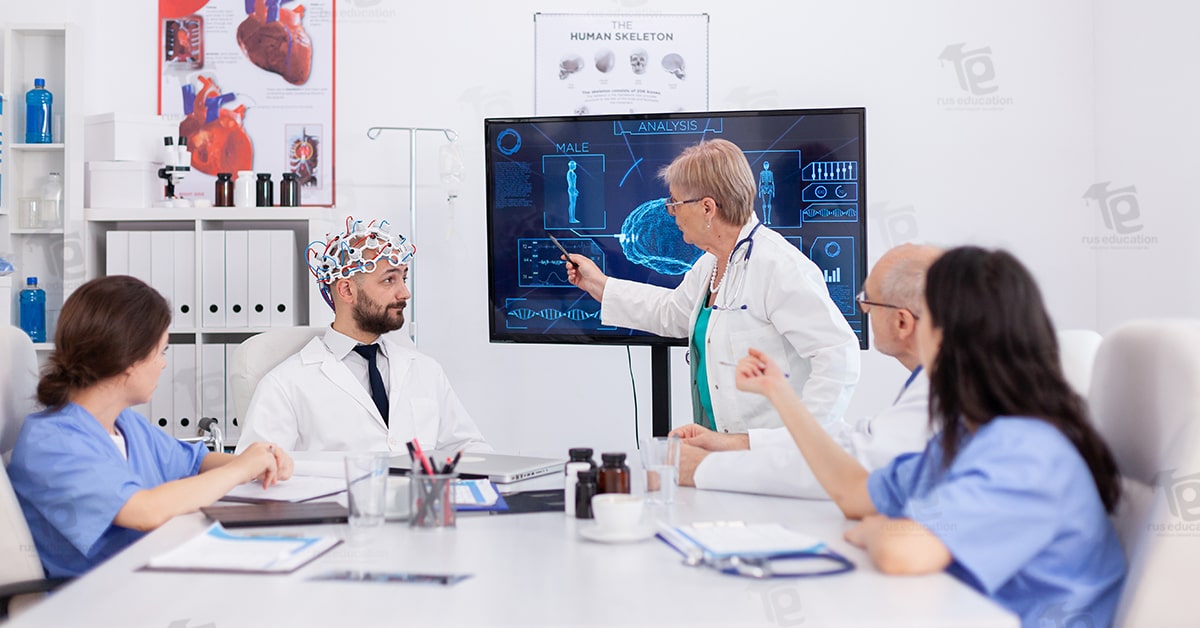From Classroom to Clinic: How Modern Infrastructure is Changing Medical Training in Russia
Russia has been one of the best destinations for higher studies amongst International students. Medical Education in Russia has long been considered a beacon of academic rigor, cultural diversity, and world-class facilities, attracting students from different corners of the globe. Known for its rich academic heritage, Russia boasts a strong educational system that emphasizes deep theoretical understanding, practical application, and scientific research.
The journey from the classroom to the clinic is one of the most critical transitions for medical students, marking the shift from theoretical learning to hands-on practice. In today’s fast-evolving world, modern infrastructure plays a pivotal role in shaping this journey, providing students with the tools, technologies, and environments they need to become competent healthcare professionals.
Let us explore how modern infrastructure plays a vital role in transforming medical training for MBBS students in Russia.
1. Advanced Simulation Labs
In modern medical training, students studying MBBS in Russia experience hands-on practical training from the second year of MBBS program. Simulation labs—equipped with life-like mannequins and state-of-the-art medical equipment, are now a cornerstone of medical training. These labs replicate real-life medical scenarios, from simple diagnostic procedures to complex surgeries, enabling students to acquire more knowledge for practice training.
Key benefits through Simulation Labs for Students studying MBBS in Russia:
Hands-on practice in a controlled and safe environment: Students studying MBBS at the Top Medical Universities in Russia get an opportunity for hands-on clinical training through simulation. Students can perform procedures multiple times, learning from their mistakes without the pressure of working on a live patient.
Build confidence: Simulation labs enable students to repeatedly work through scenarios, and develop the confidence and muscle memory necessary to handle real clinical situations with ease.
Learn through team-based care: Simulation is one of the clinical training activities that often involve interdisciplinary teams, allowing students to practice teamwork and communication, which are vital in the healthcare setting.
Incorporating simulation into the early years of medical education at the top medical universities in Russia bridges the gap between theory and practice, ensuring students are well-prepared for their clinical rotations.
➨ Read More: From Classroom to Clinic: Practical Training for MBBS in Russia
2. Digital Classrooms
Integrating digital technology into the classroom has revolutionized how medical knowledge is delivered to medical students pursuing MBBS in Russia. At many top medical universities in Russia, traditional lectures are now supplemented with virtual learning platforms, interactive videos, and online resources that allow students to learn at their own pace and revisit complex topics as needed.
Some key benefits of digital classrooms include:
Accessibility to resources: Medical students in Russia can access textbooks, research papers, and educational videos from anywhere, making it easier to stay updated on medical advancements. Additionally, the students can also attend webinars, conferences, and guest lectures delivered by experts from all over the world, providing a global perspective on healthcare practices.
Virtual anatomy and physiology labs: To enhance the student’s knowledge and understanding of the Human body in greater detail, students studying MBBS at the top medical universities of Russia get the opportunity to explore various options especially through virtual studies that include the help of 3D models and augmented reality (AR) studies.
Global learning opportunities: Online platforms provide students with a wave of opportunities. Students can attend webinars, lectures, conferences, and workshops led by renowned medical professionals from around the world.
Studying medicine is a continuous process and digital platforms advance students’ learning and no longer stop at the end of a lecture. Medical students can now explore topics in-depth, tailor their study to their individual learning styles, and stay on top of the latest developments in the field.
3. Training in Technology-Driven Healthcare Environments
Over the years, hospitals become more integrated with technology, medical students need to be trained in smart healthcare environments that reflect the future of medicine. In Russia, smart hospitals are equipped with advanced diagnostic tools, electronic health records (EHR) systems, telemedicine capabilities, and AI-driven technologies that assist in patient care.
Training in such environments allows students to:
Understand healthcare technology: Medical institutes in Russia enable medical aspirants to manage electronic health records to interpret data from AI-driven diagnostic tools. Additionally, students learn to work in tech-enabled environments.
Improve patient outcomes: The ability to access real-time data enables future doctors to make informed clinical decisions and improve patient outcomes.
Engage in telemedicine: In recent years, Telemedicine has become an essential aspect of modern healthcare. Students gain exposure through remote consultations and diagnostics, preparing them for a future where virtual care will be more common.
By incorporating these technologies into medical training, institutions are not just preparing students for current healthcare practices but for the future of medicine.
4. Collaborative Learning Spaces
Medical Profession is a team-based profession, requiring collaboration, and teamwork between doctors, nurses, specialists, and other healthcare workers. Modern medical schools are now integrating collaborative learning spaces into their infrastructure, encouraging teamwork and interdisciplinary education.
Collaborative learning spaces encourage peer-to-peer learning, promote innovation in patient care, and enhance communication skills. Modern infrastructure ensures that medical students are not only skilled in theoretical and clinical practice but also in collaboration and problem-solving.
5. Research Facilities
Pursuing a career in medicine is not just about learning existing knowledge; it’s about contributing to the future of medicine through research. Top Medical Universities in Russia are equipped with cutting-edge research facilities, giving students the opportunity to participate in groundbreaking studies and work alongside experienced researchers and faculty.
Through Research activities, medical students are exposed to clinical trials and medical research, which enables them to develop critical thinking skills and also opportunities for innovation using modern technologies to improve patient care. These experiences help students become not only excellent clinicians but also contributors to the advancement of medicine.
Conclusion!
Modern infrastructure is reshaping and transforming medical education at various levels from digital classrooms, to simulation labs, to smart hospitals and clinics, and research centers. It is bridging the gap between theoretical learning and clinical practice, fostering collaboration, and innovation. These innovations ensure that medical students receive comprehensive training, ensuring that students are well equipped for the complexities of modern healthcare.
As students transition from the classroom to the clinic, these tools and environments will prepare students for the technology-driven healthcare landscape, and equip them with the knowledge, skills, and confidence needed to succeed in their medical careers.
➨ Read More: The Importance of Technology in Medical Education





